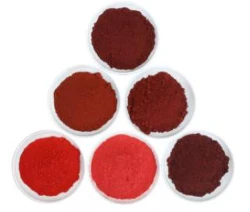Aspects of carbon black
2023-11-28
Carbon black is a form of finely divided carbon typically produced by the incomplete combustion or thermal decomposition of hydrocarbons, such as heavy oil or natural gas. It is composed primarily of carbon atoms, often in the form of microscopic particles or aggregates. Carbon black is widely used as a black pigment and reinforcing filler in various applications due to its unique properties. Here are some key aspects of carbon black:
Characteristics of Carbon Black:
1. Color:
- Carbon black is a highly effective black pigment, providing intense darkness and opacity when incorporated into materials.
2. Particle Structure:
- Carbon black particles have a complex structure, often forming aggregates or agglomerates. The structure can vary based on the production process and intended application.
3. Surface Area:
- Carbon black has a high specific surface area, which contributes to its effectiveness as a pigment and reinforcing agent in materials.
4. Conductivity:
- Depending on the grade, carbon black can exhibit electrical conductivity. This property makes it suitable for use in conductive materials, such as inks for printed electronics and certain rubber formulations.
5. UV Stability:
- Carbon black is resistant to ultraviolet (UV) radiation, making it suitable for outdoor applications where UV stability is important.
6. Reinforcing Agent:
- In rubber and plastic formulations, carbon black serves as a reinforcing filler, improving mechanical properties such as tensile strength and abrasion resistance.
7. Absorption of Light:
- Carbon black efficiently absorbs light across a broad spectrum, contributing to its black coloration. This property makes it useful in applications requiring light absorption.
Applications of Carbon Black:
1. Pigment in Paints and Coatings:
- Carbon black is widely used as a black pigment in paints, coatings, and inks. It provides deep black coloration and UV resistance.
2. Rubber Industry:
- In the rubber industry, carbon black is a crucial reinforcing agent. It enhances the mechanical properties of rubber products, including tire treads, conveyor belts, and automotive parts.
3. Plastics:
- Carbon black is added to plastic formulations to improve properties such as UV resistance, electrical conductivity, and surface appearance.
4. Inks and Toners:
- Carbon black is a common component in printing inks and toners, providing the necessary black color for text and images.
5. Battery Electrodes:
- In some battery technologies, carbon black is used as a conductive additive in electrode materials.
6. Construction Materials:
- Carbon black is incorporated into construction materials such as asphalt and concrete to enhance UV resistance and coloration.
7. Adhesives and Sealants:
- Carbon black is used in the formulation of adhesives and sealants to provide color, UV resistance, and reinforcing properties.
8. Carbon Black Nanoparticles:
- In nanotechnology, carbon black nanoparticles are utilized for various applications, including in conductive inks, composites, and as a component in some nanocomposite materials.
Environmental Considerations:
1. Soot and Air Quality:
- Incomplete combustion of hydrocarbons can lead to the formation of soot, which includes carbon black particles. Soot can contribute to air pollution and has environmental implications.
2. Health and Safety:
- Inhalation of carbon black particles can pose health risks, and occupational exposure is a concern. Proper safety measures should be followed in industries where carbon black is handled.
Carbon black's versatility and unique properties make it a valuable component in a wide range of industrial applications. However, considerations for its environmental impact and proper handling are important in ensuring responsible use. Advances in production processes aim to minimize environmental impact, and ongoing research explores alternative materials with reduced health and environmental concerns.



